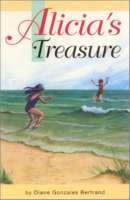
Alicia’s Treasure is the delightful tale of a young girl’s magical, fun-filled journey of discovery to the sea shore.

Alicia’s Treasure is the delightful tale of a young girl’s magical, fun-filled journey of discovery to the sea shore.
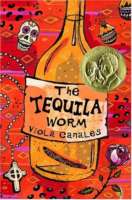
Sofia comes from a family of storytellers. Here are her tales of growing up in the barrio in McAllen, Texas, full of the magic and mystery of family traditions: making Easter cascarones, celebrating el Dia de los Muertos, preparing for quinceañera, rejoicing in the Christmas nacimiento, and curing homesickness by eating the tequila worm. When Sofia is singled out to receive a scholarship to boarding school, she longs to explore life beyond the barrio, even though it means leaving her family to navigate a strange world of rich, privileged kids. It’s a different mundo, but one where Sofia’s traditions take on new meaning and illuminate her path.
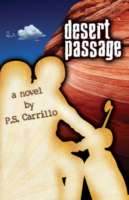
Miguel and Ramón are in big trouble with their family. The cousins were almost expelled from school for fighting, and just as they’re finishing up their final year in middle school and preparing to enter high school, their grades have dropped. Miguel’s father Rodrigo who, with his wife Connie, has raised Ramón since his father’s tragic death in a car accident has decided the boys need to be punished. So instead of going on the family’s summer vacation to Santa Fe, they’ll stay with their Abuelita Rosa in a remote town in northern Arizona and do chores around her place.Dreading a long, boring month with their grandmother in the middle of nowhere, the boys get started on the extensive list of tasks they are supposed to complete. Cleaning the shed seems like the least disagreeable one, and soon they find something interesting: a two-wheeled Vespa scooter covered with dust and cobwebs. Excited at their find, the boys decide fixing the scooter might enliven their stay. If they can get it to run, they’ll at least be able to get around town.The next morning, though, Miguel and Ramón wake to a quiet house, and they’re shocked to find their grandmother unconscious in her bed. When the ambulance takes her away to the hospital, the boys are left alone and unable to contact Miguel’s parents. Suddenly, the scooter seems to be the only answer to reaching their family, and so the boys gather food, water, sleeping bags, and the small amount of money they have and begin the long trip to New Mexico.Miguel and Ramón quickly learn that traveling across the country isn’t as easy as they had expected. Sharing the road with fast-moving eighteen-wheelers and camping in the cold desert all make for an exhausting trip. But along the way the boys see many wonderful sights including the Grand Canyon and the red rocks of Sedona and meet lots of interesting people: Frank, an old friend of their grandfather’s who helps them get the scooter ready for the trip; Turner, an attentive youth group counselor they meet at the Grand Canyon; and a group of scientists exploring an ancient Native American site. Most importantly, Miguel and Ramón will discover a lot about themselves through their growing independence as emergent young men.
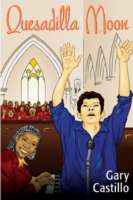
As a young migrant worker, David is shocked and thrilled when the man running the field store offers him a loaf of bread in exchange for a song. Singing has been strongly discouraged by David’s father, who views it as a less-than-manly activity. But the opportunity to get food for free is a temptation David can’t resist, and the praise he receives afterwards produces a sense of euphoria he has never felt. Someone is actually paying him to sing! But singing always leads to conflict with his father, and the only time David can do it without getting into trouble is when the others start to harmonize to pass the time as they move up and down the rows, picking cotton, asparagus, or other crops. To help get through the grueling labor, David regularly daydreams about performing in front of an adoring audience. As David and his family move from town to town following the crops, he begins to forget his dream of becoming a singer, until one day when he learns about a local competition. Somehow, his feet carry him to the Four Square Apostolic Church where the contest will take place, but he is shaken when the elderly black ladies setting up for the event tell him it’s only for “colored folk.” When he is ultimately given the chance to participate, he eagerly seizes the opportunity. Is it really possible that his dreams might come true? Will the people who believe in him–a group of African-American women and an ambitious young reporter from the Oakland Tribune–be able to help David overcome the racial, social, and familial barriers he faces?
Separated from her best friend in Brooklyn, thirteen-year-old Marisol spends a year with her grandmother in Panama where she secretly searches for her real father.
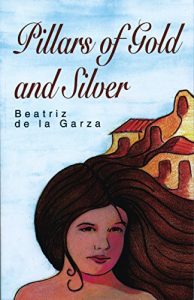 After her father is killed in the Korean War, young Blanca Estela and her mother leave California to spend the summer in Revilla, an old town in Northern Mexico with Blanca’s grandmother. At first, Blanca is unhappy in their holiday retreat, but gradually makes friends and becomes part of the community.
After her father is killed in the Korean War, young Blanca Estela and her mother leave California to spend the summer in Revilla, an old town in Northern Mexico with Blanca’s grandmother. At first, Blanca is unhappy in their holiday retreat, but gradually makes friends and becomes part of the community.

On the evening of September 24, 2004, sixteen-year-old Alicia MarÃa Betancourt was killed in a car accident. Popular, happy, fun-loving Alicia daughter, sister, and friend to so many gone in an instant. How would those left behind cope with such a sudden, devastating loss? Wrestling with grief, anger, mortality, and spirituality, Alicia’s loved ones struggle to create a lasting place in their hearts for someone who is no longer a physical presence. They share joyful and painful memories, and discover the resilient power of enduring friendship and love. In time, each person finds a way to heal while keeping Alicia’s vibrant spirit alive for those who knew her, and those who never will. Alicia Afterimage is a remarkable story of loss and recovery, but mostly it is a story of love. In this moving tribute to an extraordinary girl, readers will find a pathway through grief and a road map to remembrance. It is a book of comfort for all teens and adults who seek a way to ease the pain of losing someone they cherished.
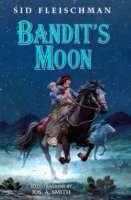
Newly orphaned, young Annyrose escapes from the villainous O.O. Mary and falls under the protection of a proud and fearless Mexican bandit, regarded as the Robin Hood of the California Gold Rush. Annyrose wants only to search for her older brother who had run off to the gold diggings, but she finds herself galloping beside the celebrated outlaw in his own quest. He is hunting down the last of a band of “Yankee” riffraff who wronged him, an event that turned the innocent young Mexican into an avenging terror of the roads. With his characteristic story twists and turns and surprises, Newbery Award winner Sid Fleischman lights up a dark corner in this Gold Rush drama set against a firestorm of bigotry ignited by the lust for riches. As for this legendary bandit, dashing about on his silken black horse and breathing fire, he actually lived.02 Rebecca Caudill Young Reader’s Book Award Nominee Master List, 00-01 Charlie May Simon Book Award Reading List, 02 Nutmeg State Children’s Book Award Masterlist, 00-01 Children’s Choice Award Masterlist, 00-01 William Allen White Children’s Book Award Masterlist, 01-02 Land of Enchantment Book Award Masterlist (Gr. 6-9), and 00-01 Sequoyah Children’s Book Award Masterlist.
After helping her grandfather plant squash, onions, carrots, cabbage, and other vegetables that her mother uses in soups and salsas, seven-year-old Marisol plants sunflower seeds in her neighbors’ yards, and weeks later, everyone gets to enjoy the fruits of Marisol’s labor.
”My name is Marisol. I’m seven years old. This spring, I helped my grandfather make a garden.” First, Marisol and her grandfather had to prepare the ground. They pulled out the old plants and weeds. They mixed up all the dirt ”to make it soft.” Then it was time to plant the seeds. They planted seeds to grow the vegetables Mama uses in soup squash, onions, carrots, and cabbage. They planted seeds to grow the things she needs to make salsa garlic, tomatoes, cilantro, and chili peppers. They planted mint for Abuela’s tea. They planted watermelon seeds for Marisol and her brother. And for Grandad, they planted sunflower seeds because their ”big black eyes with long yellow eyelashes” make him happy. And he likes to eat the seeds! One day, Marisol’s grandfather gives her a small bag of sunflower seeds, but instead of eating them she plants them here and there one in the corner of Mrs. Sosa’s yard, another in Mr. Binh’s yard. In fact, as she walks to school, she plants seeds in the corners of all the yards she passes. And she plants the last three seeds in the playground at school. As the days pass, sometimes it’s rainy and sometimes it’s sunny. Finally, one bright day, Marisol’s sunflower surprise shines a bit of happiness all around. The tender relationship between grandparent and grandchild is illuminated in this children’s book by author Gwendolyn Zepeda with warm illustrations by Alisha Gambino. Children ages 3-7 will sow and reap ideas of their own about ways to share a little joy, just as Marisol does with sunflowers.
“My name is Ana. Every year, my family makes tamales for Christmas. This year, I am six, so I get to mix the dough, which is made of cornmeal. My sister Lidia is eight, so she gets to spread the dough on the corn husk leaves. I wish I was eight, so that my hands would be big enough to spread the dough just right–not too thick and not too thin.” And so the years pass, and Ana turns eight, ten, twelve, fourteen, sixteen. But every year, big sister Lidia is always two years older. Ana envies her elder sibling and wishes she could do what Lidia does: put just the right amount of meat inside the tamales and roll them up; steam the tamales without scalding herself with the hot, hot steam; chop and cook the meat for the tamales without cutting or burning her hands. When she turns eighteen, though, Ana knows she will keep making tamales and she will be able to do all of the steps herself in her very own factory. When Christmas comes around, Ana will deliver tamales to all of her customers around the world, in delivery trucks that say “Ana’s Tamales.” And maybe Ana will even let Lidia work for her. Gwendolyn Zepeda’s rhythmic prose is combined with April Ward’s bright illustrations to create an affectionate and amusing story about sibling relationships that introduces an important Hispanic holiday tradition–making tamales!